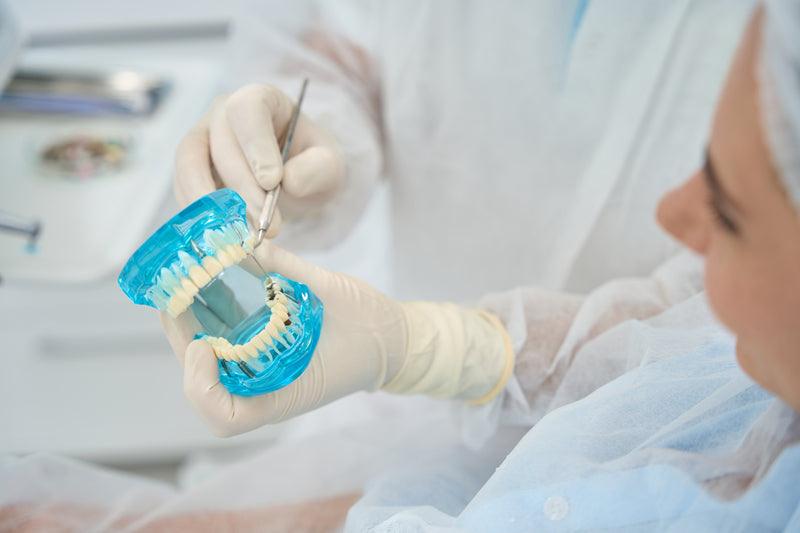How Laser Fat Removal Can Be Covered by Medicare
Laser fat removal, also known as laser lipolysis, is a popular cosmetic procedure that uses laser energy to reduce fat deposits in targeted areas of the body. This non-invasive treatment offers an alternative to traditional liposuction, with benefits such as minimal downtime and reduced risk of complications.
Related Topics (Sponsored Ads):
However, as with many cosmetic procedures, the question of insurance coverage often arises. Specifically, many individuals wonder whether Medicare, the federal health insurance program for people aged 65 and older and certain younger individuals with disabilities, covers laser fat removal. This article explores the circumstances under which laser fat removal can be covered by Medicare and the steps involved in seeking coverage.
Understanding Medicare Coverage
Medicare is divided into several parts, each covering different types of healthcare services:
- Medicare Part A: Covers hospital inpatient care, skilled nursing facility care, hospice, and some home health care.
- Medicare Part B: Covers outpatient care, doctor visits, preventive services, and some home health care.
- Medicare Part C (Medicare Advantage): Offered by private companies, these plans include all benefits of Parts A and B and often additional services.
- Medicare Part D: Covers prescription drugs.
Medicare typically does not cover elective cosmetic procedures. However, if a procedure is deemed medically necessary, it may be eligible for coverage. This distinction is crucial when considering laser fat removal.

Criteria for Medical Necessity
For Medicare to cover laser fat removal, the procedure must be deemed medically necessary. This means that the treatment is required to diagnose or treat a medical condition and meets accepted standards of medicine. Laser fat removal is generally considered a cosmetic procedure, but there are specific circumstances where it may be medically necessary:
Reconstructive Surgery: If laser fat removal is part of reconstructive surgery following an accident, injury, or significant illness, it may be considered medically necessary. For example, if a person has undergone surgery for breast cancer and requires fat removal as part of breast reconstruction, Medicare may cover the procedure.
Treatment of Lipomas: Lipomas are benign tumors made up of fatty tissue. In cases where lipomas cause pain, restrict movement, or lead to other health complications, removing them through laser lipolysis could be deemed medically necessary.
Lymphedema Management: Lymphedema is a condition characterized by swelling due to lymphatic system damage, often occurring after cancer treatment. If excess fatty tissue contributes to lymphedema and laser fat removal can alleviate symptoms, Medicare may cover the procedure.
Morbidity Obesity-Related Health Issues: In cases where excessive fatty tissue contributes to severe health problems like diabetes, hypertension, or mobility issues, and other treatments have been ineffective, laser fat removal might be considered medically necessary.
Steps to Seek Medicare Coverage
If you believe your laser fat removal procedure meets the criteria for medical necessity, follow these steps to seek Medicare coverage:
Consult with Your Doctor: Start by discussing your situation with your healthcare provider. Your doctor can help determine if laser fat removal is medically necessary for your condition and provide the necessary medical documentation.
Obtain a Referral: Medicare often requires a referral from your primary care physician or a specialist. Ensure that your doctor provides a referral that clearly states the medical necessity of the procedure.
Medical Documentation: Gather all relevant medical records, including diagnostic tests, treatment history, and documentation of how the condition affects your health and quality of life. Detailed medical documentation is crucial for supporting your case.
Submit a Pre-Authorization Request: Contact Medicare or your Medicare Advantage plan provider to submit a pre-authorization request for the procedure. This request should include your doctor's referral, medical documentation, and a detailed explanation of why the procedure is medically necessary.
Follow Up: After submitting your pre-authorization request, follow up with Medicare or your plan provider to ensure that all necessary information has been received and to check the status of your request. Be prepared to provide additional information or clarification if needed.
Appeal if Denied: If your request for coverage is denied, you have the right to appeal the decision. Work with your healthcare provider to gather additional evidence and submit an appeal to Medicare or your plan provider.
Additional Considerations
Medicare Advantage Plans: If you have a Medicare Advantage plan, coverage rules may vary. These plans often offer additional benefits beyond Original Medicare, so check with your plan provider for specific coverage details.
Secondary Insurance: If you have secondary insurance, such as Medicaid or a private supplemental plan, it may cover costs that Medicare does not. Contact your secondary insurance provider to inquire about coverage for laser fat removal.
Cost and Out-of-Pocket Expenses: Even if Medicare covers laser fat removal, there may be out-of-pocket costs such as copayments, coinsurance, and deductibles. Discuss these potential costs with your healthcare provider and insurance plan.
Conclusion
While laser fat removal is typically considered a cosmetic procedure, there are circumstances where it may be deemed medically necessary and covered by Medicare. Understanding the criteria for medical necessity, consulting with your healthcare provider, and following the proper steps to seek coverage are essential. By thoroughly documenting your medical condition and working closely with your healthcare provider, you can increase the likelihood of obtaining Medicare coverage for laser fat removal when it is needed to address a significant health issue.




